 Explosives are not something to be fooled around with lightly. If you make a mistake, you can injure or kill yourself.
Explosives are not something to be fooled around with lightly. If you make a mistake, you can injure or kill yourself.
It is very possible to make homemade explosives. In fact, it’s not even difficult — if you know what you are doing.
There is a significant amount of study material here for the serious student. However, before you try to make homemade explosives, you should research all applicable Federal, State, and Local laws and you should have a good understanding of the basic principles and practices of chemistry.
Making homemade explosives isn’t a hobby for everyone. Be careful out there.
- Subpages on Specific Explosives
- Explosives Industry Associations
- Explosives Research Groups
- Explosives Laws and Regulations
- U.S. Armed Forces Manuals on Explosives
- Explosives Detection and Identification
- Reading Material on Explosives
- Questionable Reading Materials on Explosives
- Web Sites for Explosives Research
- Books on Explosives
- Videos on Explosives
Subpages on Specific Explosives
Plastic Explosives
C-4, PENO, Primasheet, RDX, and Semtex
C-4
An RDX-based plastic explosive
Semtex
A plastic explosive based on both RDX and PETN
RDX
A plastic explosive and ingredient in other plastic explosives
Nitroclycerin
A very unstable high explosive
Dynamite
A nitroglycerine based high explosive
Explosives Industry Associations
The Institute of Makers of Explosives
The safety association of the commercial explosives industry in the United States and Canada
International Society of Explosives Engineers
The International Society of Explosives Engineers (ISEE) was formed in 1974 as a professional society dedicated to promoting the safe and controlled use of explosives in mining, quarrying, construction, manufacturing, demolition, aerospace, forestry, avalanche control, art, automotives, special effects, exploration, seismology, agriculture, law enforcement, and many other peaceful uses of explosives.
The International Association of Bomb Technicians and Investigators
The International Association of Bomb Technicians and Investigators (IABTI) is an independent, non-profit professional association formed for countering the criminal use of explosives. This is sought through the exchange of training, expertise and information among personnel employed in the fields of law enforcement, fire and emergency services, the military, forensic science and other related fields.
Western Pyrotechnic Association
Explosives Research Groups
US Army Engineering and Support Center: Ordnance and Explosives Mandatory Center of Expertise (MCX) and Design Center
To safely eliminate or reduce risks from ordnance, explosives and recovered chemical warfare materiel at current or formerly used defense sites
Lawrence Livermore Experimental Test Site
We conduct explosives and nondestructive testing to assure that the nation’s stockpile weapons are safe and reliable. Our remote location and world-class diagnostic facilities and staff make it the ideal setting to assess the integrated performance of a weapons internal components.
Explosion Group of Tu Delft
Research effort is focused on measuring and modelling dust and gas explosions under ambient and non-ambient conditions
Explosives Laws and Regulations
BATF Explosives Study Group
Bureau of Alcohol, Tobacco, and Firearms
P5400.7 - Explosives Law and Regulations
BATF (Bureau of Alcohol, Tobacco, and Firearms) - Explosives Law and Regulations
P5400.8 - List of Explosive Materials
BATF (Bureau of Alcohol, Tobacco, and Firearms) - Commerce in Explosives List of Explosive Materials
Federal Explosives Law and Regulations - 2000
ATF (Bureau of Alcohol, Tobacco, and Firearms) P 5400.7 (09/00) - The BATF (Bureau of Alcohol, Tobacco, and Firearms) Orange Book
18 U.S.C.: Chapter 40
Importation, Manufacture, Distribution and Storage of Explosive Materials
CFR 27: Chapter 1: Part 55
Commerce in Explosives
BATF Questions Answers
BATF Questions Answers on 18 U.S.S Chapter 40 and 27 CFR Part 55
Public Law 91-452
Federal Explosives Law: Organized Crime Control Act of 1970, Title XI: Regulation of Explosives
OSHA Regulation 1910.109
Explosives and blasting agents
OSHA Regulation 1910.119
Process safety management of highly hazardous chemicals
OSHA Regulation 1926.900
Blasting and the Use of Explosives
1997 Report on the Availability of Bombmaking Information
Propaganda from the Department of Justice
Explosive License and Permit Types
Definition of Types of License and Permits and Classes of Explosives
ATF F 5400.13
BATF Application for License of Permit under 18 U.S.C. Chapter 40: Explosives
Title 49: Subtitle B: Subchapter C: Part 173: Subpart C
Code of Federal Regulations (CFR) governing the transport of explosives
Federal Explosives Laws for Rocketeers
An overview of Federal laws that currently affect model and high-power rocketeers.
Guidelines for Applying for a Low Explosives User Permit
A tutorial to guide you in filling out the new AFT Form 5400.13/5400.16 for a Low Explosive User Permit (aka, LEUP). This tutorial assumes that you do not personally have an approved storage magazine, but instead will be using the magazine of another Permit holder that does have a storage magazine. In addition this tutorial will cover filling out the new Employee Possessor Questionnaire (EPQ) ATF Form 5400.28) This form is required for all Explosive Permit Applications as of March 15, 2003 for new and renewal applications.
U.S. Armed Forces Manuals on Explosives
FM5-250
Explosives and Demolitions
TM 21-210
Improvised Munitions Handbook
FM 4-30.16
Multiservice Procedures for Explosive Ordnance Disposal in a Joint Environment
EM 1110-1-4009
Army Engineer Manual - Engineering and Design: Ordnance and Explosives Response
Army Pamphlet 385-64
Ammunition and Explosive Safety Standards
Army Regulation 75-1
Malfunctions Involving Ammunition and Explosives
TM 31-201-1
Incendiaries
Explosives Detection and Identification
BATF Letter and Package Bomb Detection Techniques (P3320.5)
Survey of Commercially Available Explosives Detection Technologies and Equipment
From Sandia Labs
Checking in wth New Bomb Detection Strategies
Mike Ellenbogen in Security Management Magazine
Evaluation of a Test Protocol for Explosives Trace Detectors Using a Representative Commercial Analyzer
The Test Protocol in its final form was found to be suitable for use by nonspecialists in trace contraband detection and provides a uniform standard test procedure for the evaluation and comparison of trace detectors. In this report, details from the application of this Test Protocol are described and discussed. In addition, background reference material relevant to ion mobility spectrometry (IMS) is provided.
Guide for the Selection of Commercial Explosives Detection Systems for Law Enforcement Applications
This document includes a variety of information that is intended to be useful to the law enforcement community in the selection of explosives detection techniques and equipment for different applications. It includes a thorough market survey of all trace and x-ray based commercial detection systems known to the authors as of October 1998, including company contact information along with data on each systems cost, size, and uses. Information is also included on some additional novel detection technologies, and on such standard techniques as canine and physical search. Brief technical discussions are presented that consider the principles of operation of the various technologies.
Use of Gamma Resonance Imaging for Detection of Explosives
To implement a novel and efficient approach for detection and localization of explosives in small packages, luggage and large cargo containers. The method takes advantage of Gamma Nuclear Resonance Absorption (GNRA). This is an element specific interaction of highly penetrating gamma radiation with matter. The method is also applicable for detection of radiation dispersive devices and nuclear bombs, both of which contain explosives for their operation. Majority of explosives are distinguished from other common materials by higher nitrogen and total densities. Thus simultaneous determination of these two will identify explosives uniquely.
Combined sensor for detection of explosives based on timed neutron source and continuous microwaves
A portable version of a combined sensor for detection of explosive substances is described. The sensor is based on continuous electromagnetic UHF waves and timed neutron source. Combination of both methods allows one to quickly localize hidden object within large area and to identify it. It is expected that the sensor would be capable of detecting modern explosive substances weighting 100 grams with little or no metal content up to depths 20 cm.
Explosives Detection Boarding Pass Analyzer
A simple boarding pass could safeguard air travelers if an explosives detection system being developed by Oak Ridge National Laboratory and Mass Spec Analytical is adopted. With the mass spectrometry-based instrument, a passenger’s ticket would become a passive sampling device that detects even a billionth of a gram of explosives such as nitroglycerine and TNT. The instrument works by sampling air that passes over a ticket as the paper is fed through a scanner and then identifying the chemical composition of the substances in the air. The procedure takes just a few seconds and would allow all passengers to be sampled with no increase in manpower.
Developing an Automated Explosives Detection Prototype Based on the AS&E 101ZZ System
Thesis describing the development of a multi-sensor, multi-energy x-ray prototype for automated explosives detection.
Taggants in Explosives
Tagging of explosives can refer to two types of marking technologies. Detection taggants are used to enhance the detection of explosives before detonation. Identification taggants are intended to be used to trace explosive materials to their source after detonation. The Antiterrorism Act of 1996 requires a detection taggant, or agent, be added to plastic explosives. Without such an additive, plastic explosives can be difficult to detect, and could pose a security threat in the hands of terrorists. These detection agents can be added to plastic and sheet explosive products to make them more “visible” to existing detection equipment without compromising safety or the performance of affected materials. IME has continually supported the development of such detection technologies. However, identification taggants present a different story.
Alternatives for Landmine Detection
At the rate that government and nongovernmental organizations are clearing existing landmines, it will take 450-500 years to rid the world of them. Concerned about the slow pace of demining, the Office of Science and Technology asked RAND to assess potential innovative technologies being explored and to project what funding would be required to foster the development of the more promising ones.
Taggant Technology for Post-blast Explosives Identification
The National Mining Association is opposed to mandating identification taggants in explosives because it is unproven technology. Countries which have a long history of terrorism - Israel, Ireland, Germany, Japan, and Great Britain - have not adopted a taggant program and do not intend to do so.
The didactic values from consideration of the analysis and characterisation of nitroglycerine based explosives by Proton magnetic resonance spectroscopy
Most forensic analytical studies of explosives focus on trace components, on clothing, persons and debris. Excellent methods are currently available with high sensitivity and selectivity. Examination of bulk samples, from unexploded devices and seized stores, allow less sensitive, yet selective, methods to be used for the identification and quantification of key compounds without problems from differential recoveries of trace levels of dispersed materials. It is not acceptable to examine bulk explosives in areas used for trace analysis and it is necessary to isolate staff working with bulks from those analysing traces to avoid cross contamination.
Reading Material on Explosives
Introduction to Explosives
Good introduction to common explosives from the Royal Society of Chemistry
bombsecurity.com
The Internet’s Largest Source for Information on Explosive-related Security Issues
BATF Bomb Threat Checklist
BATF Vehicle Bomb and Explosion Hazard Evacuation Distance Tables
Improvised Primary Explosives
Dirk Goldmann’s recipes for improvised primary explosives, exotic and friction primers, and fun and touch explosives. Includes recipes for acetone peroxide, ddnp/dinol, double salts, hmtd, lead azide, lead picrate, mekap, mercury fulminate, milk booster, nitromannite, sodium azide, and tacc.
TNT: Trinitrotoluenes and Mono and Dinitrotoluenes
Book on the manufacture and properties of TNT.
Explosive Science
Raymond N. Rogers and Joan L. Rogers
Propellants, Explosives, Pyrotechnics
Bi-monthly journal with articles on propellants, explosived, pyrotechnics, ignition, combustion, and detonation
Vulture’s 3D Structures of explosive molecules
3D structures of various explosive compounds
Field Expedient Methods for Explosives Preparation
Procedures to make explosives
Trinitrophenol, H.M.T.D., Lead Picrate, Ammonium Picrate , M.M.A.N., Hexamethylenetetramine Dinitrate, C.T.A.P., P.E.T.N., R.D.X., Nitrourea, Sucrose Nitrate, Sorbitol Hexanitrate, Mannitol Hexanitrate, Cellulose Nitrate, Amylose Nitrate, Tetranitronapthalene , T.M.D.D. , C.T.M.T.N.A., NG / EGDN , Aminodinitrophenol (Picramic Acid), Diazodinitrophenol (D.D.N.P.), and Silver Acetylide Nitrate (Double Salts)
Pyrotechnic Chemicals
The most common chemicals used in modern day pyrotechnics, both consumer and display.
Nitro-Explosives
A Practical Treatise Concerning the Properties, Manufacture, and Analysis of Nitrated Substances, including the Fulminates, Smokeless Powders, and Celluloid.
U.S. Patent 2,890,240
U.S. Patent on Aspirin Crystallisation for the preparation of Picric Acid
Practical Pyrotechnics
Good information on fireworks and pyrotechnics, including chemicals, tools, formulae, device components, and building pyrotechnic devices.
Organic Synthesis
Organic Syntheses presents to the organic chemistry community detailed experimental methods in a standard format for the synthesis of organic compounds.
The Physical and Theoretical Chemistry Laboratory Oxford University Chemical and Other Safety Information
A large directory of chemical and other safety information, including Material Safety Data Sheets (MSDSs).
Naval Ordnance and Gunnery: Explosives
A discussion of the characteristics, use, and handling of chemical explosives currently used in the United States Navy.
1997 Economic Census: Explosives Manufacturing
Census statistics on explosives manufacturing
How To Make Gun Cotton
An excerpt from The Household Cyclopedia of General Information
How To Make Gun Cotton
An excerpt from The Collodion Process on Glass by Frederick Scott Archer
Shock-initiation and detonation extinction in homogeneous or heterogeneous explosives: some experiments and models
Some recent modeling of critical dynamical behaviors of homogeneous or heterogenous explosives in conditions of chemical decomposition close to the detonation regime. The approaches are based on continuum and micromechanical models. The first part of the presentation is devoted to the shock-to-detonation transition (SDT) in homogeneous materials, the second one to detonation critical diameters of heterogeneous materials. Each part is preceded by a short review of experimental facts. The choice is to relate modeling and experiments by means of as simple as possible assumptions, yet mathematically and physically consistent with the underlying dynamics of the phenomena.
On predicting the effective elastic properties of polymer bonded explosives using the recursive cell method
Polymer bonded explosives are particulate composites containing elastic particles in a viscoelastic binder. The particles occupy an extremely high fraction of the volume, often greater than 90%. Under low strain rate loading (~0.00a-1 s-1) and at room temperature and higher, the elastic modulus of the particles can be four orders of magnitude higher than that of the binder. Rigorous bounds and analytical estimates for the effective elastic properties of these materials have been found to be inaccurate. The computational expense of detailed numerical simulations for the determination of effective properties of these composites has led to the search for a faster technique. In this work, one such technique based on a real-space renormalization group approach is explored as an alternative to direct numerical simulations in determining the effective elastic properties of PBX 9501. The method is named the recursive cell method (RCM). The differential effective medium approximation, the finite element method, and the generalized method of cells (GMC) are investigated with regard to their suitability as homogenizers in the RCM. Results show that the RCM overestimates the effective properties of particulate composites and PBX 9501 unless large blocks of subcells are renormalized and the particles in a representative volume element are randomly distributed. The GMC homogenizer is found to provide better estimates of effective elastic properties than the finite element based homogenizer for composites with particle volume fractions less than 0.80.
Effective elastic moduli of polymer bonded explosives from finite element simulations
Finite element analysis has been used successfully to estimate the effective properties of many types of composites. The prediction of effective elastic moduli of polymer-bonded explosives provides a new challenge. These particulate composites contain extremely high volume fractions of explosive particles (> 0.90). At room temperature and higher, the Young’s modulus of the particles can be 20,000 times that of the binder. Under these conditions, rigorous bounds and analytical approximations for effective elastic properties predict values that are orders of magnitude different from the experimental values. In this work, an approach is presented that can be used to predict three-dimensional effective elastic moduli from two-dimensional finite element simulations. The approach is validated by comparison with differential effective medium estimates and three-dimensional finite element simulations. The two-dimensional finite element approach has been used to determine the properties of models of polymer bonded explosives and PBX 9501 in particular, containing high volume fractions of circular and square particles with high modulus contrasts. Results show that estimates of effective elastic properties from two-dimensional finite element calculations are close to the values predicted by the differential effective medium approach for a large range of volume fractions and modulus contrasts. Two- and three-dimensional finite element estimates for volume fractions from 0.70 to 0.90 and found not to differ considerably. Simulations of models of polymer bonded explosives and PBX 9501 show that the microstructure, the amount of discretization, and the type of element used play a considerable role in determining the value predicted by finite element simulations. The effective elastic moduli of PBX 9501 predicted by finite element calculations can vary from 200 MPa to 10,000 MPa depending on the microstructure and level of discretization used. The results also suggest that if a microstructure can be found that accurately predicts the elastic properties of PBX 9501 at a certain temperature and strain rate, then the same microstructure can be used to predict elastic properties at other temperatures and strain rates.
Study of Detonation Parameters of Polynitroadamantanes, Potential New Explosives
Molecular mass/density and oxygen content/sensitivity relationships of polynitroadamantanes and their aliphatic counterparts, important for their explosive properties, were studied. Densities, sensitivities and detonation properties of polynitroadamantanes obtained/calculated are the same as those of standard high explosives. Some of them might have better characteristics than TNT, and similar ones to pentrit and hexogen, respectively.
Granular Explosives and Initiation Sensitivity
Fundamental chemical reaction rates are temperature depend. However, the initiation process for a heterogeneous explosive is dominated by peaks in the temperature field called hot spots. Numerical simulations typically use empirical pressure dependent reaction rates. These can be viewed as a subgrid model that accounts for unresolved reaction phenomenon. The limitation of simple burn rates is most severe for the initiation of a detonation wave by a weak stimuli. The problem is particularly acute for accident scenarios that involve damaged explosives. A granular explosive captures the dominant features of damage; a heterogeneous length scale from the grain size and an additional degree of freedom from porosity. Continuum mechanical simulations on the meso-scale are used to better understand how the hot-spot distribution varies with mechanical stimuli, in particular, the strength of a compaction wave in a granular bed. A physical understanding of the formation and growth of hot spots is needed to develop improved subgrid burn models that encompass a wider domain of applicability.
Augmented Shock Wave Severance of Materials
This paper describes a new approach for severing or weakening a variety of materials. The technique employs embedding explosive cords into parallel grooves that are cut into a surface of a material. The cords are initiated simultaneously to produce shock waves that progress toward the centerline between the cords and the lower surface of the material. Intersecting incident and reflected waves augment at the centerline to fail or weaken the material in tension. No harmful debris is produced on the opposite side of the material from the explosive cords. The primary focus of the effort described in this paper was to fracture the F-16 aircraft trilaminate canopy. Also, complete severance was achieved in 2024-T4 aluminum plate stock. Possible applications are throughcanopy egress and crew module severance from military aircraft and separation of rocket vehicle stages and payloads.
Questionable Reading Materials on Explosives — Don’t Trust This Stuff
Gelatin Explosive from Anti-Freeze
This explosive is almost the same as the nitro-gelatin plastique explosive exept that it is supple and pliable to -10 to -20 deg. C.
Platic Explosive from Aspirin
This explosive is a phenol dirivative. It is toxic and explosive compounds made from picric acid are poisonous if inhaled, ingested, or handled and absorbed through the skin.
Plastic Explosive from Bleach
This explosive is a potassium chlorate explosive.
Plastic Explosives from Swimming Pool Chlorinating Compound
This explosive is a chlorate explosive from bleach. This method of production of potassium or sodium chlorate is easier and yields a more pure product than does the plastique explosive from bleach process.
How to Make Black Powder (and other explosives)
Technically, Black Powder burns by a process known as deflagration. This differs from detonation in that Black Powder produces subsonic shock waves, as opposed to the supersonic shock waves produced by explosives such as Dynamite, C-4 or TNT. This means that Black Powder is better suited as a propellant (such as in fireworks, bullets and cannons) than blasting (such as in construction or demolition).
The History of Gunpowder
A brief history of gunpowder.
How To Make Gun Cotton
Quick and untested instructions for making guncotton.
Web Sites for Explosives Research
Sam Barros’ ChemLabs
Nitrocellulose, Nitro Starch, Nitromannitol, Nitroglycerine, Picric Acid, Styphnic Acid, Mercury Fulminate, Silver and Copper Fulminates, Silver and Copper Acetylide, Mercury and Silver Oxalate, Lead Picrate, Potassium Picrate, Lead Styphnate, Potassium Styphnate, Explosive Peroxides, Deflagrating chemicals, Potassium Bromate, Sodium Metal in Water, Chlorate Oxidizers, Potassium Permanganate Hypergol, Sodium Peroxide Hypergols, Ammonium Dichromate, HydroFluoric acid on glass.
Rogue Science
Home of The Explosives and Weapons Forum
Amateur Pyrotechnics and Chemistry Forum
Xinventions.com: Pyrotechnics
wantsomfet’s Kangaroooo Corner
Megalomania’s Controversial Chem Lab: Explosives
Detailed information on how to synthesize 89 different explosive compounds in the lab
DOE Explosives Safety Manual
The Department of Energy’s (DOE’s) explosives safety requirements applicable to operations involving the development, testing, handling, and processing of explosives or assemblies containing explosives.
Pyrotechnics
Lindsay Greene’s Pyrotechnics Website
Backyard Ballistics
The Auzzie Pyrotechnics Page
Makeshift Arsenal
Dale’s House of Pyro
Pyroking’s Fireworks Library
Fireworks Central
Frogfot’s Page
The Green Man
Homemade M-80’s
blndreeper
Krimzon Pyro
John DuBois’ Pyrotechnics
Dan Williams, Amateur Pyrotechnician
Procedures to Make Explosives
Pyromaster Pyrotechnics
ithicapyro
ICP’s Pyrotechnics
Pyro Projects for The Amateur
Mr. Yuk Laboratories
Brainfever’s Site
Black Dragon’s Pyro Page
Prof.J.Vrijdag’s Pyrotechniek Page
Thugsta’s Explosives and Pyrotechnics
Explosives and Pyrotechnics Information Database (EPID)
Flash, Bang, BOOM!
Short Fuse Pyrotechnics
RuffRyder and Inferno’s Pyrotechnics Site
Pyro Universe
Pyro Supreme
The Pyro Stuff
D3D Pyrotechnics
Freakpyromaniacs
(Dutch)
American Fireworks News
The Journal of Pyrotechnics
Dimrock’s Pyro Page
Pyrotechnics - The Art of Fire
Books on Explosives
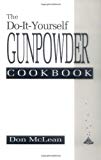
Do-It-Yourself Gunpowder Cookbook
Learn how to make gunpowder from such items as dead cats, whiskey, your living room ceiling, manure and maple syrup with simple hand tools and techniques that have been used for centuries. This is a practical and safe approach to making the oldest propellant/explosive known.
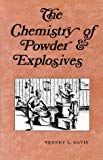
The Chemistry of Powder and Explosives
The late Dr. Davis produced this book as part of the material used for training his grad students in WWII about chemical engineering aspects of explosives. However, the best part of the book is probably the section on the history and development of explosives. Davis was one of those scientists who had a rare grasp not only of the theoretical and practical aspects of his field, but also its historical underpinnings. This book doesn’t compare with Urbanski as far as chemical engineering goes, but rather gives a brief overview of many diffrent materials that were in use in the mid twentieth century. I wouldn’t recommend this book as a lab manual, but would heartily endorse it as a place to begin the study of the history of this aspect of science.
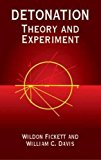
Detonation: Theory and Experiment
Comprehensive review of detonation explores the “simple theory” and experimental tests of the theory; flow in a reactive medium; steady detonation; the nonsteady solution; and the structure of the detonation front. Many simple cases are worked out for illustration.

Physics of Shock Waves and High-Temperature Hydrodynamic Phenomena
The physical and chemical processes occurring in gases at high temperatures are the focus of this outstanding text by two distinguished physicists. They discuss essential physical influences on the dynamics and thermodynamics of continuous media, combining material from such disciplines as gas dynamics, shock-wave theory, thermodynamics and statistical physics, molecular physics, spectroscopy, radiation theory, astrophysics, solid-state physics, and other fields.
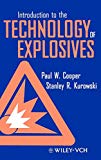
Introduction to the Technology of Explosives
Introduction to the Technology of Explosives Paul W. Cooper and Stanley R. Kurowski Introduction to the Technology of Explosives is a clear and concise survey of the technologies and physical processes involved in explosive phenomena. The book is intended to provide the worker new to the field with sufficient background to understand problems that may arise and to interact intelligently with specialists in the field. The book covers the fundamentals of the chemistry of explosives; the mechanics of burning; sound, shock, and detonation; initiation and initiators; scaling in design and analysis; and off-the-shelf explosive devices. It provides the basic calculational skills needed to solve simple, first-order engineering design problems, and emphasizes the crucial importance of safety considerations. The book contains a broad range of data on explosive materials, and their properties and behavior, along with extensive lists of useful references. Example problems with solutions are provided in each technical area, as are descriptions and analysis of a wide variety of explosive devices. The book concludes with a thorough and comprehensive description of regulatory requirements for the classification, transportation, and storage of explosives, and an extensive guide to explosives safety in plant and test facilities. This book will be of interest to explosives technicians and engineers, government regulators, crime and accident scene investigators, and instructors in military, police, and FBI bomb schools.
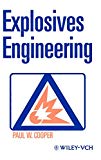
Explosives Engineering
This graduate text, and Cooper’s companion introductory text (‘Introduction to the Technology of Explosives’), serve the same markets as the successful explosives reference by Meyer, now in its 4th edition. VCH also published the International Journal of Propellants, Explosives, and Pyrotechnics. The resulting package would give VCH the major presence in the field. This text presents the basic technologies used in the engineering of explosives and explosive systems, i.e., chemistry, burning, detonation, shock waves, initiation theories, scaling. The book is written for upper-division undergraduate or graduate-level scientists and engineers, and assumes a good grasp of basic physics, chemistry, mechanics and mathematic through calculus. It is based on lecture notes used for graduate courses at the Dept. of Energy Laboratories, and could serve as a core text for a course at schools of mining or military engineering. The intent of the book is to provide the engineer or scientist in the field with an understanding of the phenomena involved and the engineering tools needed to solve/ design/ analyze a broad range of real problems.
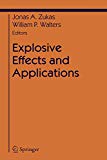
Explosive Effects and Applications
This is a broad-based text on the fundamentals of explosive behavior and the application of explosives in civil engineering, industrial processes, aerospace applications, and military uses.
The book includes chapters on all aspects of explosives, each written by an expert in the field: Introduction to Explosives (W.C. Davis) Explosives Development and Fundamentals of Explosives Technology (P.R. Lee) Shock Waves, Rarefaction Waves, Equations of State (W.C. Davis) Introduction to Detonation Physics (P. Cooper) The Chemistry of Explosives (J.C. Oxley) Theories and Techniques of Initiation (P.R. Lee) The Gurney Model for Explosive Output (J.E. Kennedy) Hazard Assessment of Explosives and Propellants (P.R. Lee) Safe Handling of Explosives (J.C. Oxley) Demolitions (C. Weickert)
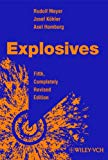
Explosives
This world-famous reference work has been enlarged and updated without tampering with its tried and tested format. Around 500 alphabetically ordered, monographic entries consider the physicochemical properties, production methods and safe applications of over 120 explosive chemicals; discuss 70 fuels, additives and oxidizing agents; and describe test methods.
The extensive thermodynamic data have been thoroughly updated and for the first time are also provided in electronic format. The included CD-ROM was compiled by the Fraunhofer Institute of Chemical Technology (Pfinztal, Germany) and represents an excerpt from the ICT Thermodynamical Database. Not only additional thermodynamic data, and references to further reading, but also enhanced search facilities are provided.
Other key features include: the 1500-entry combined index and glossary (comprising terms and abbreviations in English, French and German), conversion tables and many literature references.
This book is suitable for explosive experts and also for translators, public authorities and patent lawyers.
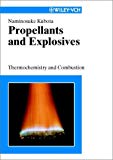
Propellants and Explosives: Thermochemistry and Combustion
The combustion phenomena of propellants and explosives are dependent on physicochemical parameters such as ingredients, catalysts, pressure, initial temperature, and flow field. This book presents the fundamental bases of energetics of materials, deflagration and detonation, thermochemical process of decomposition and combustion, and combustion wave structures. The combustion mechanisms of various types of energetic materials, propellants, and explosives are discussed based on the heat transfer process in the combustion waves. The burning rate models are also presented to understand the rate-controlling steps of combustion processes, which show the relationships of burning rate versus pressure and initial temperature.
The combustion processes of propellants and explosives are highly complicated because of the heterogeneous structures of the materials, and because of phase changes from solid to liquid, and to gas under high pressure and temperature conditions. Therefore the real combustion phenomena are demonstrated by the use of a number of colored photographs during burning. New applications of energetic materials such as pyrolants and ducted rockets for an advanced propulsion system are also described.

Explosives Identification Guide
This book is a reference guide to explosives for emergency responders such as firefighters, police officers, and EMS staff as well as security personnel. Through color photographs and short descriptions, the student can identify explosives by general type and learn the appropriate way to treat each of them. Written in a general, non-technical style, the book is a fast and easy guide for those with little or no knowledge of, or experience with, explosives.
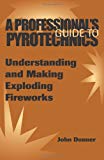
Professional’s Guide To Pyrotechnics : Understanding And Making Exploding Fireworks
This book offers a well-rounded selection of reliable, well-researched formulas for the most popular exploding fireworks, including M80s, cherry bombs, ash cans, chasers, globe torpedoes, Knallkorpers, aerial bombs, cracker balls, Flashcrackas and more. For academic study only.

Home Workshop Explosives, Second Edition
This book earns the title! Over the course of 172 pages, I have taken all of the great material in the first edition and added to it a series of recipes and procedures which produce military grade explosives from commonplace items and materials. In doing so, I conclusively prove that the restrictions which have been placed upon the access to the commercially produced explosives which were so freely available in my youth are all futile. The real enemies in “the war on terror” are not inanimate objects such as explosives. The real enemies are the politicians who have flung open our borders to infiltration by Moslem guerrillas. These guerrillas are already well versed in the techniques of improvised weaponry manufacture.
This treasure trove of explosive information features The Hardware Store Nitro Recipe, Fuel/Air Explosives, military equivalent ammonium nitrate formulations, nitromethane mixtures, and a vastly improved detonator section.
The expose`of the folly of our present policies doesn’t stop there either! Read all about the construction of remote control cruise missiles and RC torpedoes. Claymore mines and air cannons add spice to the stew. Then top it all off with my commentary on the easiest ways to obtain all the materials mentioned in the book.
I’ve read all the books on the topic of explosives from tiny paperbacks to 600 page texts written by PhDs. I have no hesitation saying this book tops them all! It’s my hope that when you finish reading this book, politicians will no longer be able to fool or distract you by blaming an inanimate object such as explosives for the direct results of their disastrous policies.
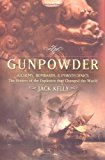
Gunpowder: Alchemy, Bombards, and Pyrotechnics : The History of the Explosive That Changed the World
From veteran author Jack Kelly, a tour through the turbulent history of one of mankind’s most critical inventions-the fiery substance that transformed everything from fireworks in China to warfare in Renaissance Europe and beyond.
When Chinese alchemists fashioned the first manmade explosion sometime during the tenth century, no one could have foreseen its full revolutionary potential. Invented to frighten evil spirits rather than fuel guns or bombs-neither of which had been thought of yet-their simple mixture of saltpeter, sulfur, and charcoal went on to make the modern world possible. As word of its explosive properties spread from Asia to Europe, from pyrotechnics to battleships, it paved the way for Western exploration, hastened the end of feudalism and the rise of the nation state, and greased the wheels of the Industrial Revolution.
With dramatic immediacy, novelist and journalist Jack Kelly conveys both the distant time in which the “devil’s distillate” rose to conquer the world, and brings to rousing life the eclectic cast of characters who played a role in its epic story, including Michelangelo, Edward III, Vasco da Gama, Cortez, Guy Fawkes, Alfred Nobel, and E.I. DuPont. A must-read for history fans and military buffs alike, Gunpowder brings together a rich terrain of cultures and technological innovations with authoritative research and swashbuckling style.
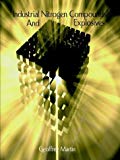
Industrial Nitrogen Compounds and Explosives - Chemical Manufacture and Analysis
Includes the circulation of nitrogen nature, the nitrate industry, the nitric acid industry, the ammonia and ammonium salts industry, synthetic ammonia, the cyanamide industry, the cyanide and prussiate industry, the manufacture of nitrous oxide, laughing gas, nitrogen monoxide and the explosives industry.
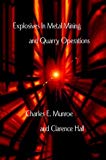
Explosives in Metal Mining and Quarry Operations
Includes combustion and explosion, blasting and mine explosives, fuse, detonators, and electric detonators, firing blasts by electricity, the use of explosives in excavation work, use of explosives in quarrying, use of explosives in metal mining and tunneling, drilling and blasting methods on New York rapid-transit tunnel, magazines and thaw houses, permissible explosives, requirement for bureau of mines tests of metal-mine explosives, safe shipment and storage of explosives, publications on mine accidents and tests of explosives.
Videos on Explosives
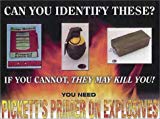
Pickett’s Primer on Explosives
Used by individuals and organizations as training for the identification of and the correct response to commercial explosives, military ordnance, homemade explosives, and weapons of mass destruction. Includes instructor and student guides as well as a book on explosives identification.
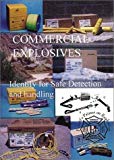
Commercial Explosives
Describes the different commercial explosives such as blasting caps, blasting agents, boosters, detonating cord, black and smokeless powders, and covers safety procedures for securing the area and removing the explosives.
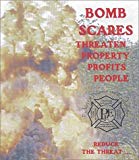
Bomb Scares and Bomb Search Procedures
Examines the conditions that might trigger a bomb threat and the motives behind the threat. “Bomb Scares and Bomb Searches” helps personnel learn how to search for a homemade bomb and how to respond when an explosive is found on site.
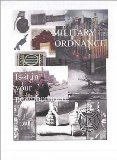
Military Ordnance
Describes the many types of military ordnance. Covers grenades, fuses, shells, land mines, CBU’s and BLU’s, rockets and missiles, incendiaries, simulators and CAD items.

High Explosives
When people think of war, guns, tanks, planes and rockets spring to mind. But without high explosives, none of these weapons would work. More than anything else, gunpowder and its many other combustible cousins are at the heart of modern warfare. HIGH EXPLOSIVES ventures from Ancient China to today’s high-tech battlefields to tell the story of the powders, plastics and countless other explosive mixes mankind has developed in the unending quest to create the perfect weapon. Find out about the many different types of explosives, from mines to ballistic missile payloads, and see how they were developed and deployed. See stunning evidence of their incredible power in the lab and on the battlefield and learn what the future of explosives may hold. And join military historians as they trace the refinement of battlefield explosives, and how they have changed the face of warfare.
Explosives,